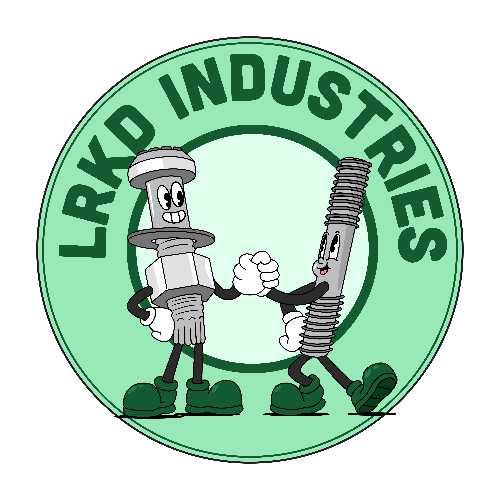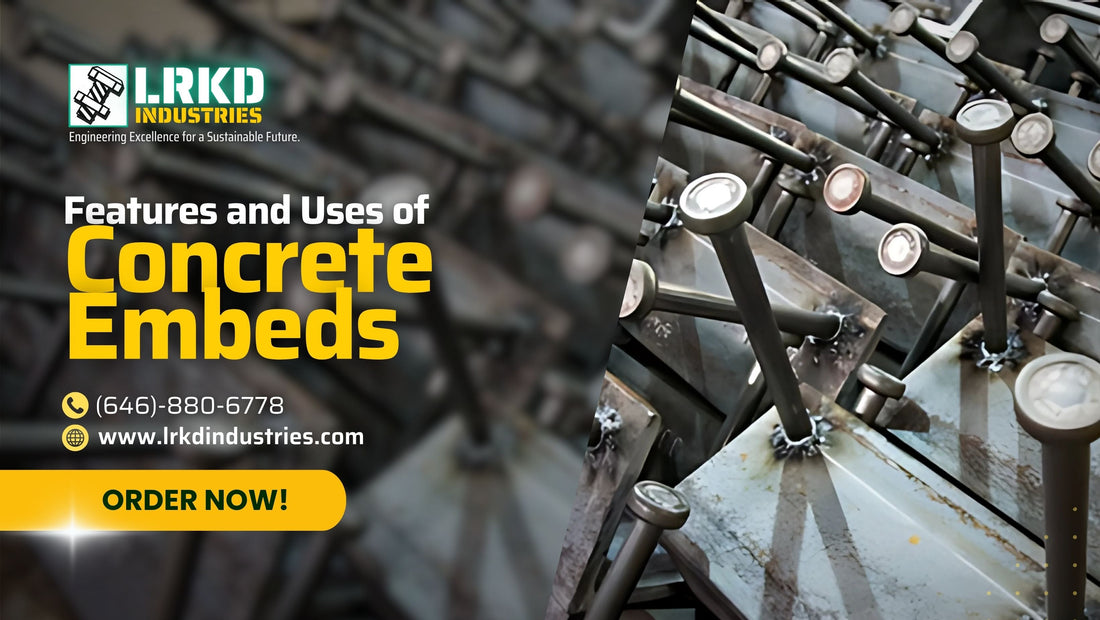Consider building a sports stadium, a high-tech industrial facility, or a huge skyscraper. What maintains the durability and strength of these structures? Concrete embeds, which are concealed reinforcements that guarantee the integrity, strength, and long-term performance of a concrete building, are an essential but sometimes disregarded component.
In order to secure steel components, electrical conduits, piping systems, and other necessary parts inside concrete slabs, walls, and columns, concrete embeds are important. Knowing the fundamentals of concrete embeds may assist you, as a contractor, architect, or engineer, improve structural designs, increase construction efficiency, and steer clear of expensive blunders.
We'll go over the main characteristics, varieties, uses, and best practices for concrete embeds in this tutorial.
What Are Concrete Embeds?
Concrete embeds are pre-engineered metal components designed to be placed within concrete structures before the concrete sets. These components serve as permanent fixtures that provide attachment points for various elements such as steel beams, machinery, or façade systems.
Key Features of Concrete Embeds
High Strength & Durability – Made from materials like stainless steel, carbon steel, or galvanized steel, ensuring they withstand significant loads and harsh conditions.
Corrosion Resistance – Many embeds are coated or made from corrosion-resistant materials to prevent deterioration over time.
Precision Engineering – Manufactured to fit exact specifications, ensuring seamless integration with other structural elements.
Load-Bearing Capacity – Designed to handle tensile and shear forces, making them ideal for securing heavy loads.
Versatility – Available in various shapes and sizes to accommodate different structural needs.
Types of Concrete Embeds
Different types of concrete embeds serve specific purposes based on their design and application. Below are the most common types:
1. Anchor Plates & Weld Plates
These are flat metal plates with pre-drilled holes or welded studs that serve as a base for attaching structural elements like beams and columns.
2. Embedded Anchors & Bolts
Used to secure equipment, piping, and structural components, these include:
Headed Stud Anchors – Welded onto steel plates before embedding in concrete.
Bent Bar Anchors – Provide extra grip in the concrete due to their bent shape.
Threaded Inserts – Allow for easy bolting of equipment post-installation.
3. Rebar Couplers & Connectors
These help join reinforcing bars (rebar) to create seamless structural connections, enhancing the integrity of the concrete structure.
4. Electrical & Mechanical Embeds
Used in commercial and industrial settings to integrate electrical conduit systems, plumbing pipes, or HVAC components within concrete walls and floors.
5. Structural Steel Embeds
Often used in precast concrete and tilt-up construction, these embeds support the attachment of steel frameworks and exterior cladding systems.
Common Applications of Concrete Embeds
Concrete embeds have a wide range of applications across different industries. Here’s where they make a significant impact:
- 1. Commercial and Industrial Buildings
Used for securing steel columns, beams, and prefabricated structures.
Help in installing mechanical and electrical systems within concrete walls and slabs.
2. Bridges and Infrastructure
Anchor plates and reinforcing bars are critical for bridge deck stability.
Highway and railway projects rely on embeds for guardrails, lighting systems, and expansion joints.
3. Precast Concrete Construction
Embedded lifting anchors help in transporting and positioning precast elements.
Structural embeds support wall panels, facades, and staircases.
4. Industrial Facilities and Power Plants
Support heavy-duty machinery foundations.
Provide stable anchorage for pipelines, boilers, and turbines.
5. Stadiums and Arenas
Used in roof truss connections and seating structures.
Ensure stable installation of lighting and sound systems.
Best Practices for Installing Concrete Embeds
Proper installation is key to ensuring the longevity and effectiveness of concrete embeds. Follow these best practices:
1. Plan and Coordinate Early
Work with engineers and designers before pouring concrete to ensure embeds are correctly placed.
Use 3D modeling software like BIM to visualize embed placement and avoid conflicts.
2. Use Proper Anchoring Techniques
Ensure embeds have adequate depth and anchorage to handle structural loads.
Follow manufacturer guidelines for welding, bolting, and reinforcement.
3. Prevent Corrosion
Use galvanized or stainless steel in corrosive environments.
Apply protective coatings where necessary.
4. Conduct Quality Checks
Inspect embed placement before concrete is poured.
Verify alignment using surveying equipment to avoid costly corrections.
5. Allow for Expansion & Contraction
In temperature-sensitive structures, use slotted or flexible connections to prevent cracking or structural damage.
Comparison of Common Concrete Embed Materials
|
Material |
Strength |
Corrosion Resistance |
Typical Applications |
|
Stainless Steel |
High |
Excellent |
Marine, Chemical Plants |
|
Carbon Steel |
Very High |
Moderate |
Bridges, Heavy Structures |
|
Galvanized Steel |
Medium-High |
Good |
Outdoor Applications |
|
Fiberglass |
Moderate |
Excellent |
Electrical Insulation |
Final Thoughts: Why Concrete Embeds Are Critical
Concrete embeds are the unsung heroes of structural integrity, playing a crucial role in supporting buildings, bridges, and industrial facilities. Proper selection, installation, and maintenance ensure strength, durability, and long-term performance.
If you're planning a construction project, consulting with structural engineers and sourcing high-quality embeds can save time, reduce costs, and enhance overall safety. Whether it’s securing steel frameworks or integrating mechanical systems, using the right concrete embed can make all the difference.
Ready to Optimize Your Construction Projects?
For expert advice on choosing the best concrete embeds for your needs, reach out to LRKD Industries. We offer top-quality materials, custom solutions, and engineering support to ensure your project’s success.
Concrete Embed Solutions for Structural Precision
Concrete embeds are the unseen anchors of construction—providing strength, stability, and connection between structural steel and concrete elements. From weld plates and anchor sleeves to custom fabricated inserts, LRKD Industries supplies top-tier embed solutions tailored for your project's specific requirements.
Our concrete embeds are ideal for commercial buildings, industrial facilities, infrastructure projects, and more—ensuring durability, alignment accuracy, and seamless integration with steel structures.
Contact LRKD Industries today to source high-quality concrete embed products engineered for reliability and performance.
👉 Submit your project details today for a FREE consultation on concrete embed solutions.
📍 Address: 98 N Industry CT, Deer Park, NY 11729, US
📞 Phone: +1 646-880-6778
📧 Email: info@lrkdindustries.com
We also provide file conversions into Tekla-compatible “.dwg” format, supporting efficient BIM workflows from modeling through fabrication.
For more information about our products and services, click here.
In foundational work, precision isn't just helpful—it’s non-negotiable.


